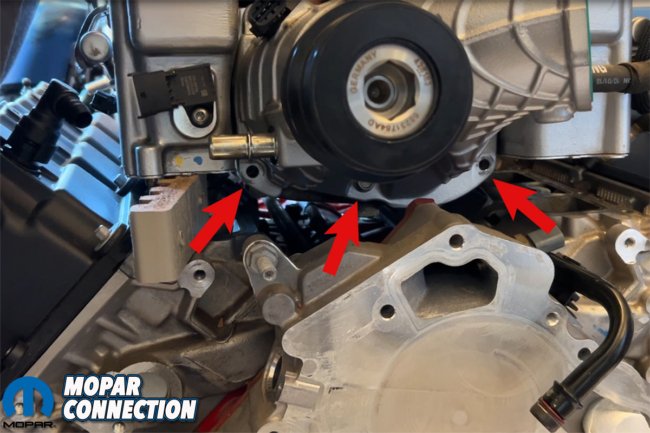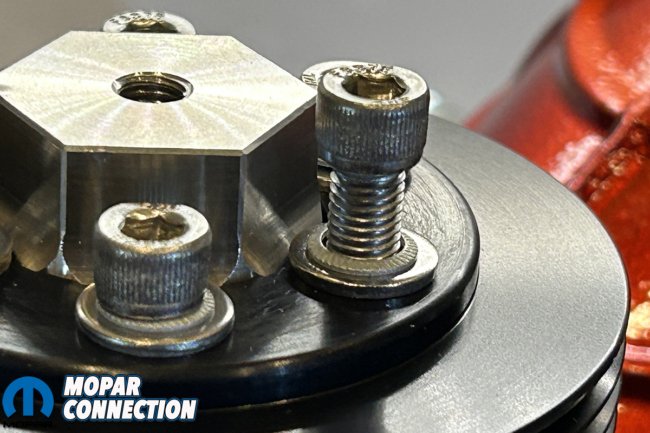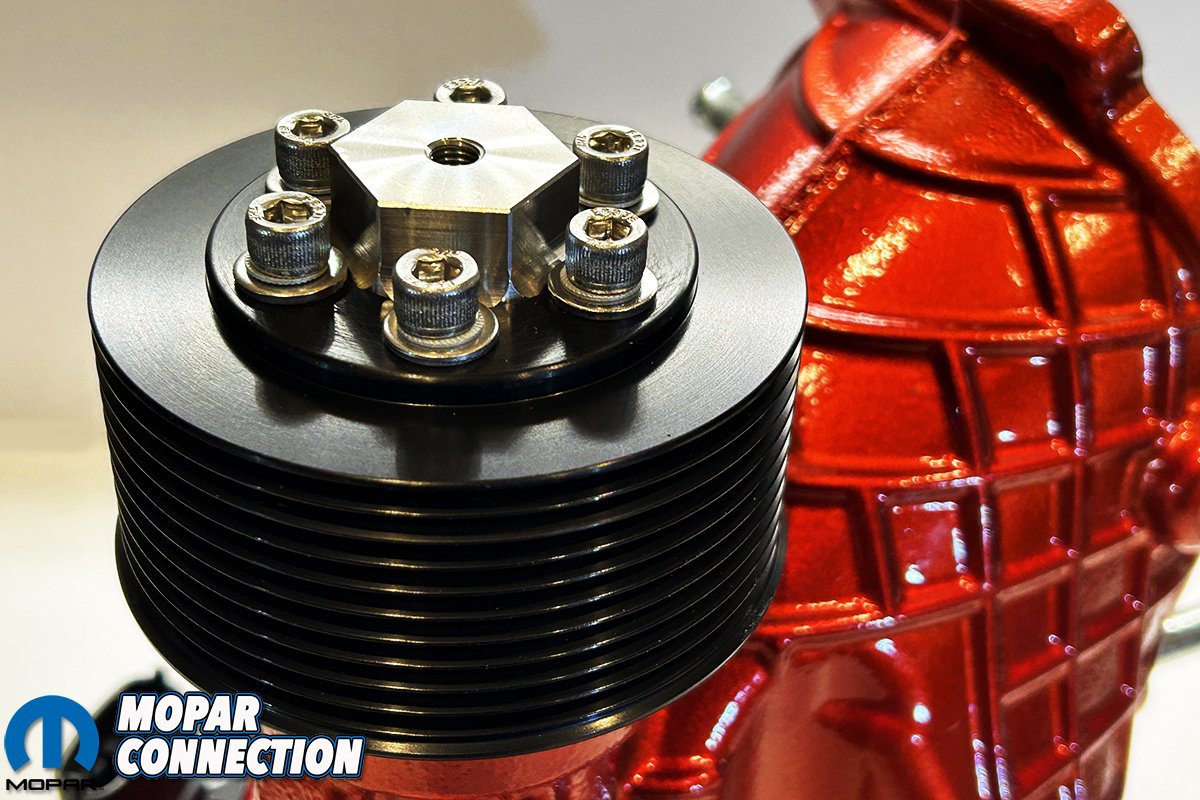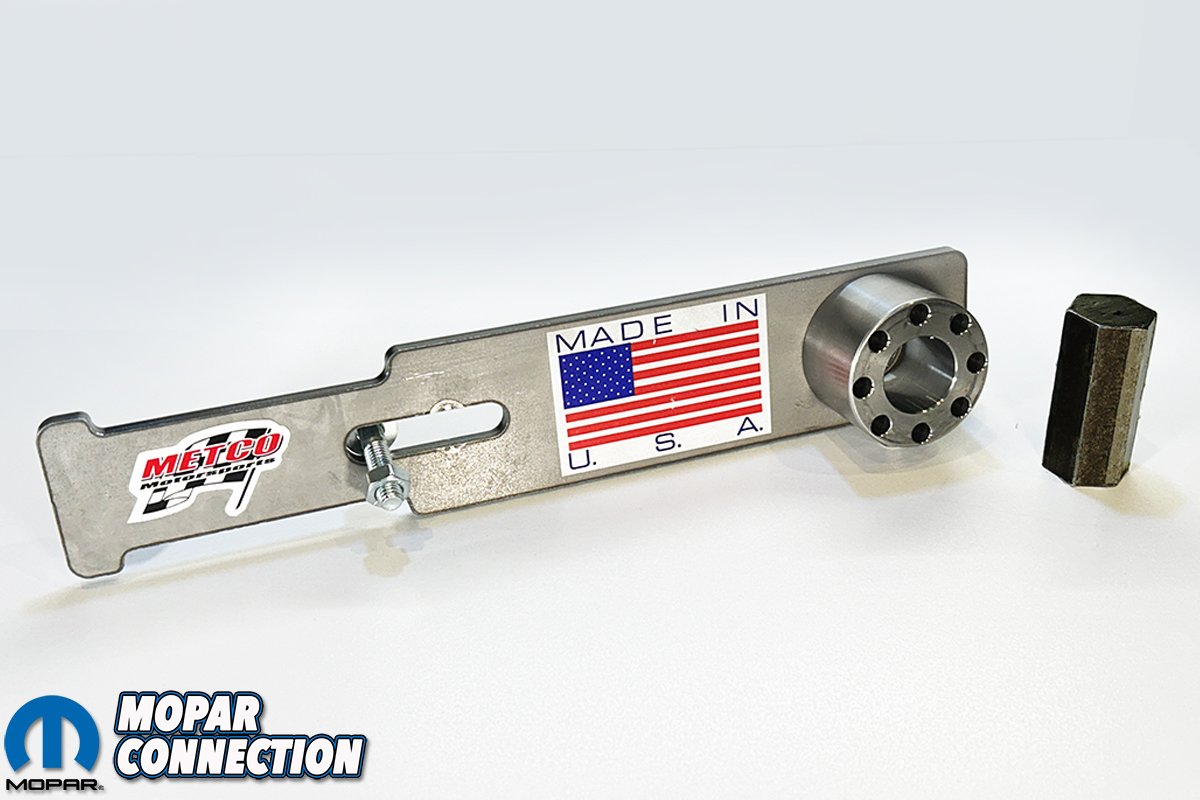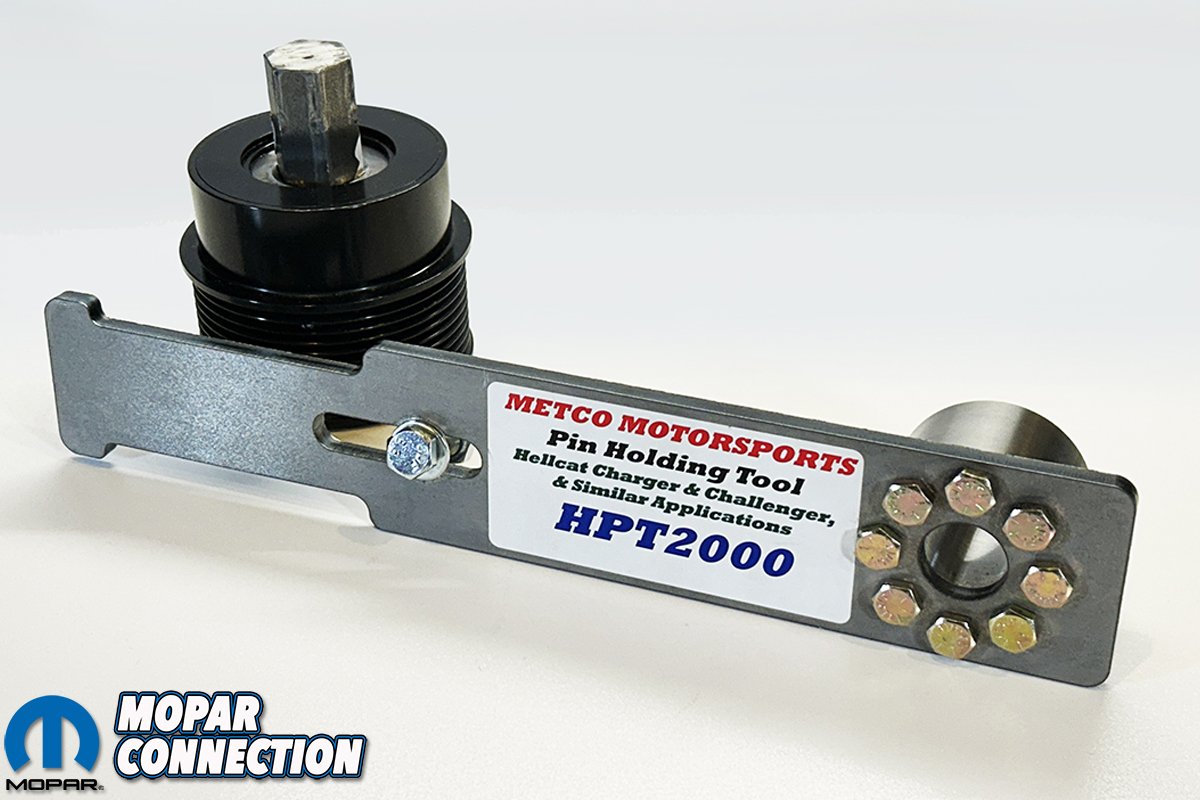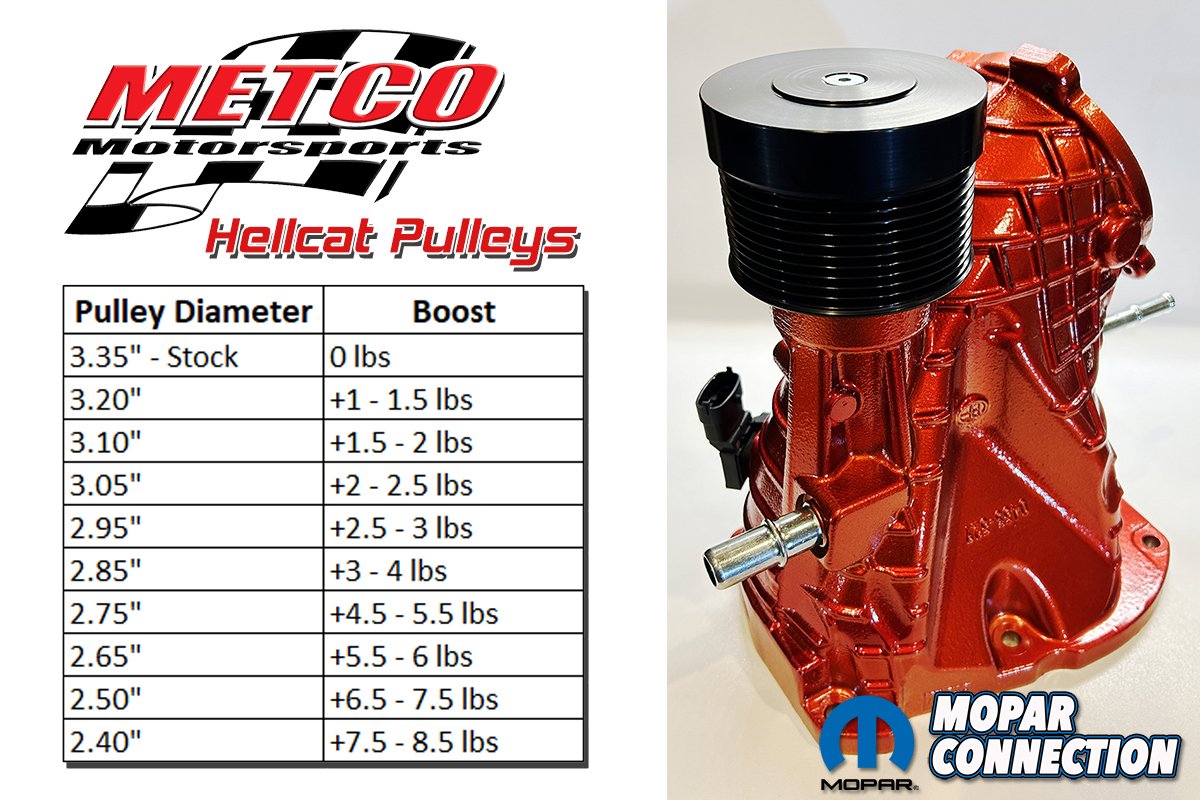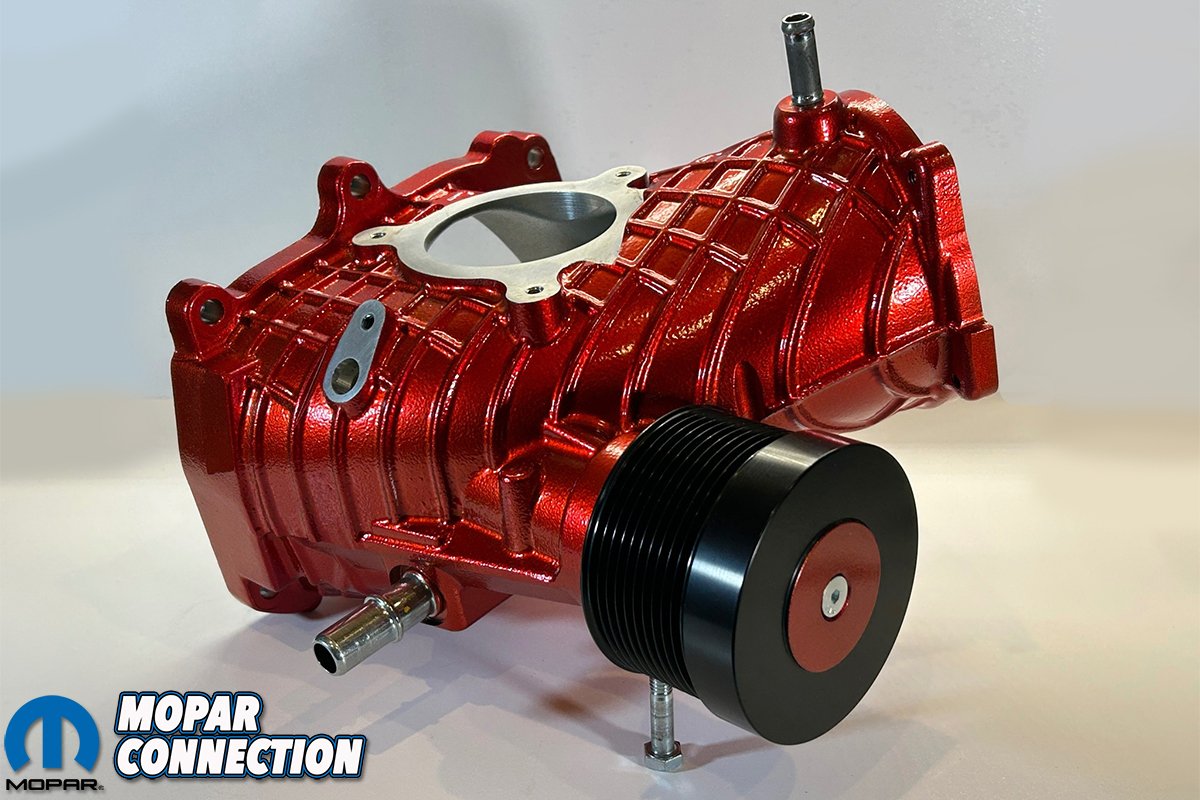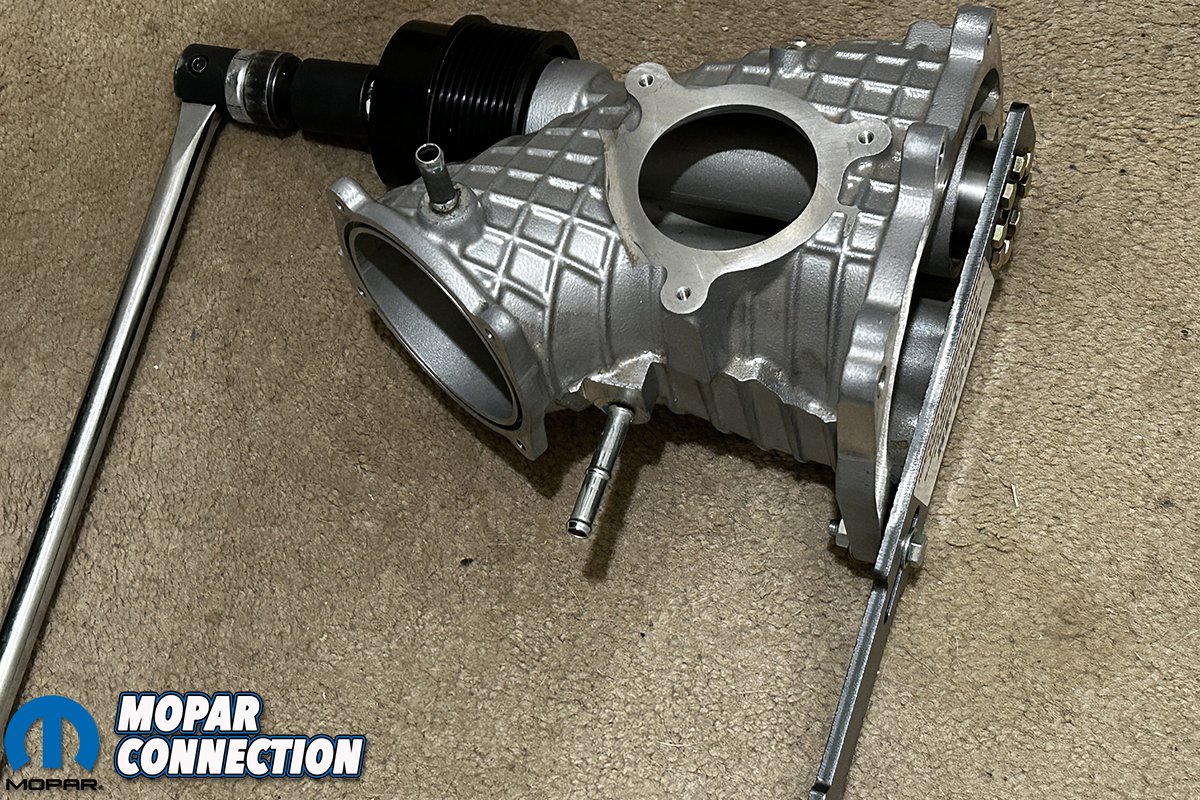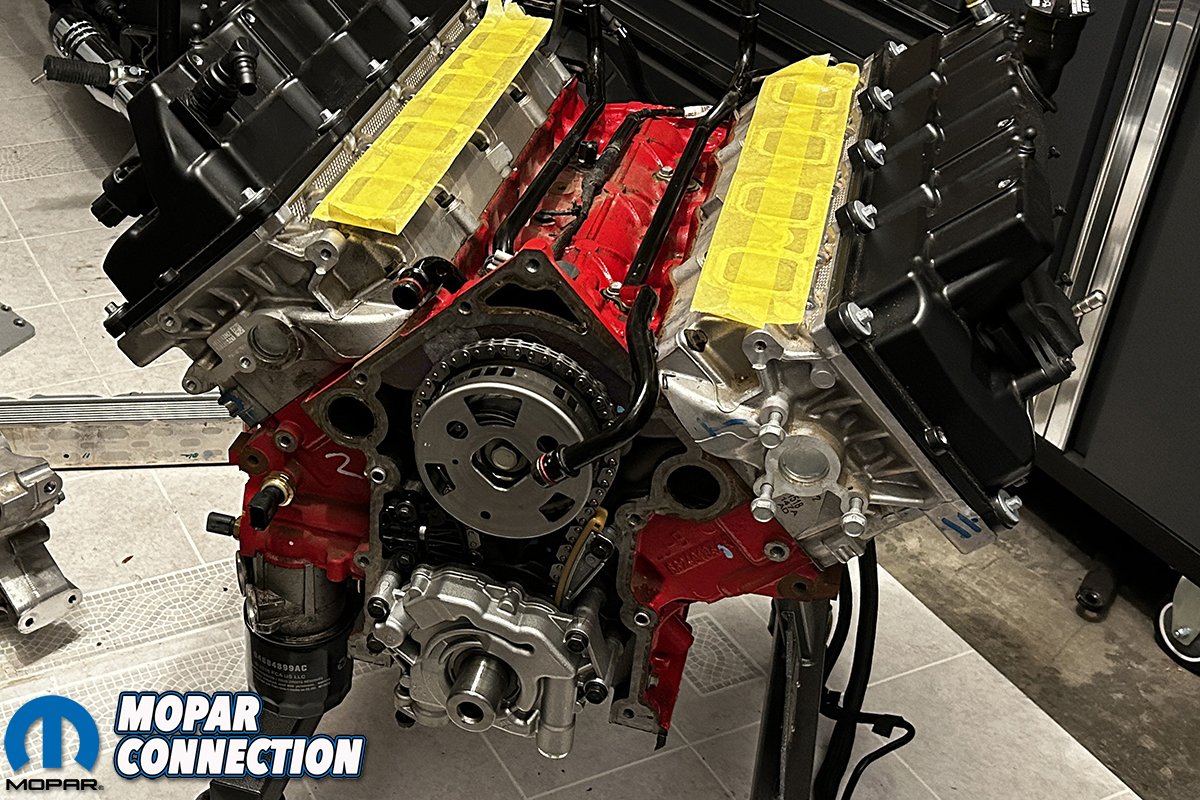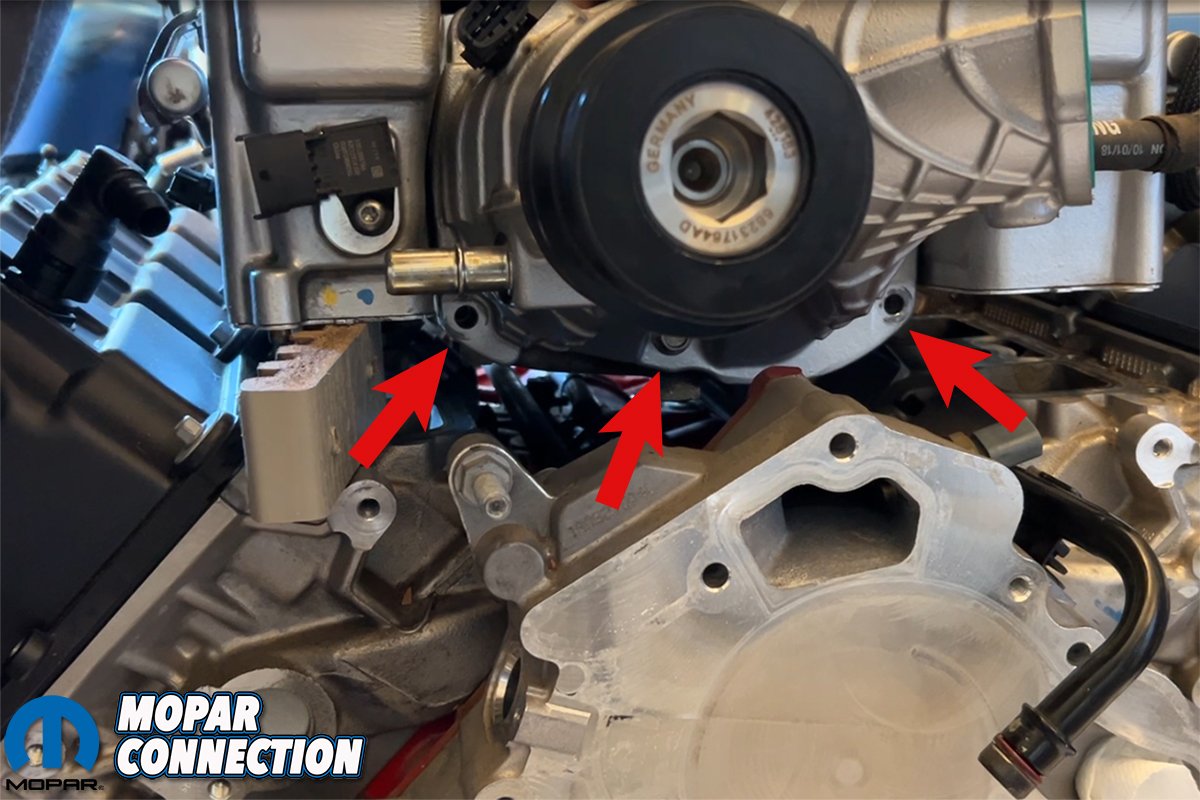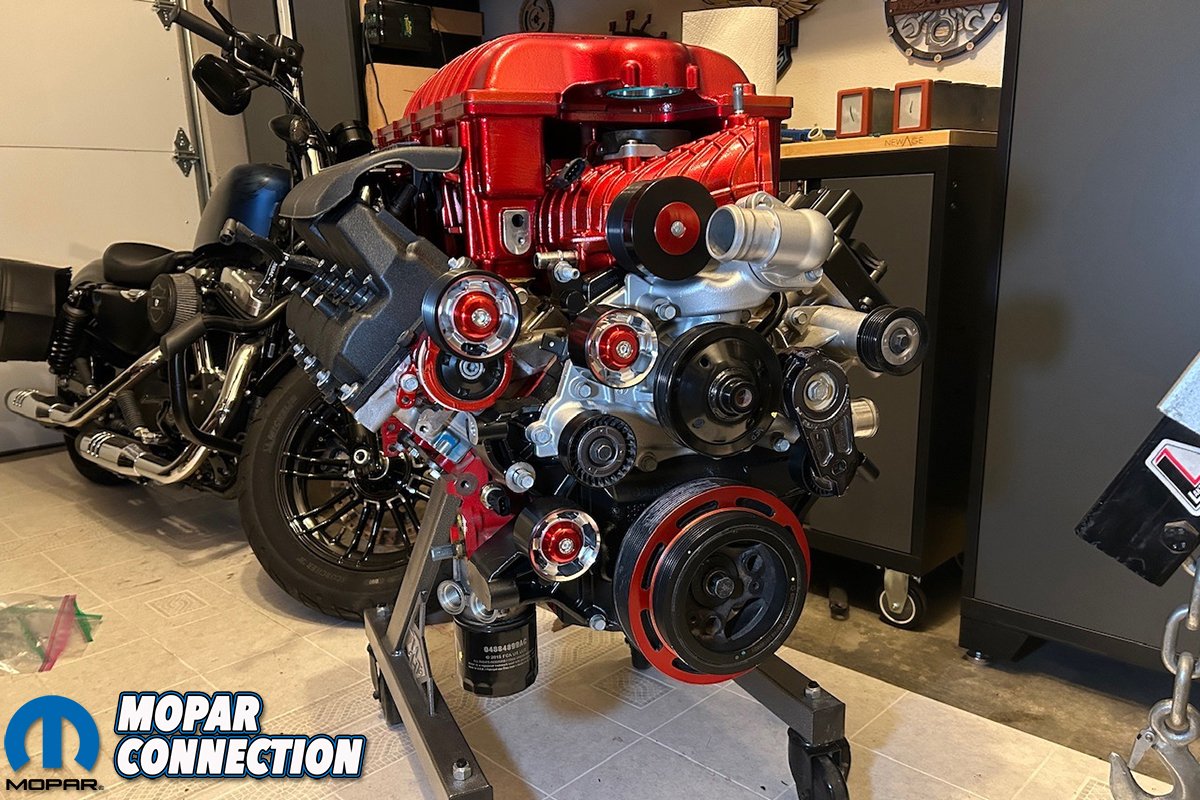It’s a hefty project: implanting a 2019 Hellcat Redeye into a 1965 Plymouth Belvedere II. Sometimes going about it a little differently is a nice touch; taking out the old and installing the new – as is – has been done numerous times. Part of that lofty goal was to add a little color to the Redeye supercharger without going too far over budget.
In lieu of costly powder coating – which requires complete disassembly of the supercharger – we decided to spice things up with some rattle-can creativity; the color of choice was, naturally, red. To do it right, however, it meant removing the supercharger altogether; it meant taking it apart as far as possible with existing tools.
If the goal was to ‘paint in place’ using gobs of masking tape on the rest of the engine, and only painting the lid, that’s more of a ‘one and done’ type project. But for this type of spice it meant painting the lid, the blower, and the snout. We eased into the project by first removing the snout to prep it for paint.
That required removing all of the bolts on the lid in order to raise the supercharger enough to access the six bolts that hold the snout in place – you can’t access them without doing this. Once the snout was removed, the first dilemma was that pesky plastic cap on the drive pulley.
We found that the best way to remove it is to use a pick tool: stab it in the center, and discard it once removed. But then a roadblock reared its ugly head where it wasn’t expected; the blower drive pulley wasn’t going to be removed with simple hand tools.
Thus began our search for a specialty tool to aid in the removal of the Hellcat’s rather difficult supercharger pulley. One specific tool was predominant throughout our search: Metco Motorsports’ HPT2000 – a Pin Holding Tool that clamps onto the back of the snout and holds the rear of the shaft in place via the eight pins that interface with the blower drive.
Coupled with its HPT1000 Hex Insert, it can make simple work of a task that has proven to be difficult for many. The HPT2000 is affordable, and removing the pulley can be done without the solicitation of a friend – and the obligatory beer and pizza. It didn’t stop there, however, and as that ever-so-charming pitchman, Billy Mays, often exclaimed, “But wait… there’s more!”
A little more digging on its website, and we found that Metco also offered an adapter (HPT2001) specific to the Redeye and Demon supercharger. We went back to watching videos that explained how to remove the pulley, and most videos led us to believe that these three tools, combined, were all we needed. But we were misled, and struggled with removing the pulley.
If you ask in Hellcat-specific groups on social media, you’ll find varied responses: use an impact, don’t use an impact; listen to me, don’t listen to him; you will destroy it and have to replace it, send it to a professional. It’s enough to drive you nuts trying to figure out who had the right answer. After this mind-struggle, we found out that there was one more tool that was vital to the task at hand, and that was to access the wisdom of Metco’s owner, Rick Bejarano.
One call – which he encourages his customers to make – and we were given simple instructions that could not be found in any of the videos or social media posts that were viewed. The proverbial light at the end of the tunnel appeared as we mentioned that the bolt on the back of the shaft had come loose.
“One of the reasons we have a hole in the tool where it attaches to the drive is to access that center bolt,” Rick told us. He suggested to add some red Loctite to the bolt, then tighten about 10 ft-lbs above spec, which is 65 ft-lbs.
With that information, and a good breaker bar, that stubborn pulley was off in less than a minute. While its not recommended to use an impact gun on the hex insert (as recommended in a few videos) Rick did tell us that there are a few tuners that have done so to make quick work of it. He also reminded us to loosen that bolt in the rear, and tighten it back to spec. Done and done.
While the goal was to simply remove the pulley to facilitate painting the snout, Rick provided more insight to other components that hadn’t been considered. In reality, the 797hp of the Hellcat Redeye is plenty of power for this project, and adding boost just means more tuning than the Hellcrate Redeye kit currently provides. But more power, to nearly any gearhead, is never really off the table, is it?
That’s when Rick suggested replacing the supercharger pulley with one of his own – even if it’s the same diameter as the OE pulley at 3.35″. The reasoning is simple: should the decision be made at a later date to add just a little more boost with a smaller pulley, it can be done in place without removing the supercharger or the snout. In other words, it’s a simple upgrade.
That piqued our curiosity, so we asked which of Metco’s other nine supercharger pulley offerings would be safe to use, without requiring a lot of other modifications. “This is a dangerous question to consider because there are so many variables that affect the level of cylinder pressure resulting from a pulley change,” Rick warned us.
“If we assume an unmodified, non-Redeye application operating at (around) sea level, I’ve seen our 3.20” and also 3.10” pulleys used to safely replace the original 3.35.” He does suggest that without matching tuning these pulley changes won’t optimize the power, but they did provide substantially more power. That provides a couple of options for us to consider should we get bored with the near 800hp we already have.
When it comes to the Hellcat, Rick is no stranger. Armed with some inside information about the Hellcat – and a history of working with OEM supercharged applications dating back to the turn of this century – Rick began developing components for the Hellcat prior to its release. Soon after, his wife, Kristi, took possession of her 2015 Hellcat Challenger – which was the first one sold in their home town.
He told us, “We worked closely with reputable and trustworthy shops to determine appropriate supercharger pulley sizes, and in this process gathered an incredible amount of data about the Hellcat platform.” He added, “We continue to work very closely with our network of installers and tuners.”
That early onset of making even more power from the Hellcat, you could say, was pioneered by Metco Motorsports. “For many years,” he tells us, “we were the only supplier of Hellcat supercharger pulleys following its release.” The design made sense: create a removable pulley that could be changed to a smaller diameter for increased boost.
He continued, “More aggressive pulley changes can likely be made as elevation increases, but it is important to remember that any pulley change without a matching tune needs to be very carefully considered.” We noticed that our OE pulley is a clutch style, whereas the Metco offerings are fixed, and we asked if that’s a concern given that there must be a reason Dodge created it that way.
“We investigated the option of manufacturing a clutched pulley like the OEM unit vs. offering a fixed pulley like we have done for previous supercharged applications,” Rick explained. “Immediately, concerns developed with the clutched pulley regarding the durability of this design. It is necessary to reduce the size and mass of the clutch mechanism to fit it inside a performance pulley size, and these smaller clutch components could not offer the durability of the original pulley.”

He went on to state that his pulley design, without any moving parts to fail, has provided a durability that the smaller clutch mechanisms could never match. “There is evidence that our concerns about a performance clutched pulley were not unfounded – we have since sold many, many of our pulleys to shops and dealerships replacing failed clutch pulleys.”
This gave us a lot to consider, and from there we came across a plethora of goodies that not only make life easier when it comes to boosting the performance of the Hellcat, but they look great in the process. We’ll get to some of those other parts in the next entry, and talk a little more about Metco Motorsports’ other offerings.
It was such a relief to finally remove the pulley and to prep for paint, but we weren’t done there, not by a longshot. To reiterate the words of our favorite pitchman, “But wait, there’s more.”







